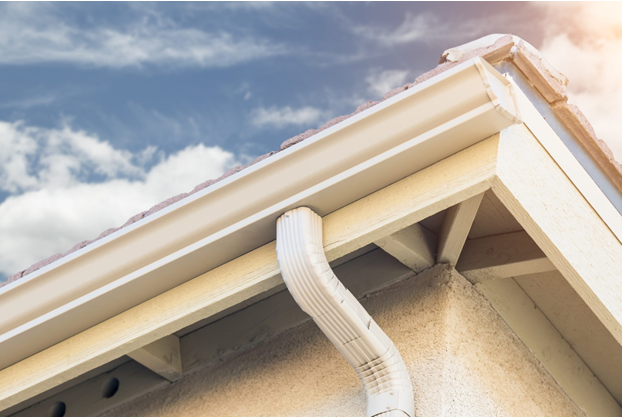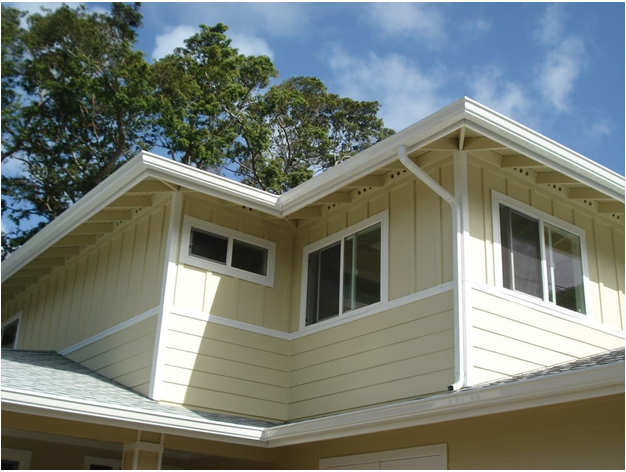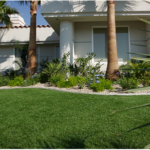When it comes to home maintenance, selecting the best rain gutters might not be the first thing that comes to mind, but they play a crucial role in protecting your home from water damage. The right raingutters can save your home from costly repairs by effectively directing rainwater away from your foundation, roof, and siding. With various options available, choosing the right raingutter system may feel overwhelming. This guide will help you understand the different types of raingutters, materials, and factors to consider so you can make an informed decision that suits your home’s needs.
Why Raingutters Matter
Raingutters are more than just channels for rainwater. They are essential for:
- Protecting the Foundation: By directing water away from the base of your home, raingutters help prevent foundation erosion and potential structural damage.
- Preventing Basement Flooding: Properly installed raingutters reduce the risk of water seeping into your basement, keeping it dry and safe.
- Protecting Your Roof and Siding: Raingutters keep rainwater from dripping down the sides of your house, which helps prevent mold, mildew, and damage to your siding and roofing materials.
- Maintaining Landscaping: Raingutters direct water away from flower beds and other landscaping elements, protecting them from erosion and waterlogging.
Types of Copper Gutters
Understanding the types of raingutters available will help you choose the best system for your home.
- K-Style Raingutters
- Description: These are the most popular raingutters, featuring a flat bottom and decorative front that resembles crown molding.
- Benefits: They have a higher capacity for water than other styles and are available in a wide range of materials.
- Best For: Most residential homes due to their efficiency and aesthetic appeal.
- Half-Round Raingutters
- Description: These gutters are semicircular tubes that are often seen on historic or older homes.
- Benefits: They have a classic look and are easy to clean due to their smooth interiors, which minimizes clogging.
- Best For: Homes with a more traditional or vintage aesthetic.
- Box-Style Raingutters
- Description: These are large, rectangular gutters commonly used on commercial buildings, but they’re also suitable for homes in areas with heavy rainfall.
- Benefits: They have a large water capacity, making them ideal for regions with significant precipitation.
- Best For: Homes in heavy rain areas or properties with expansive roofs.
- Sectional Gutters
- Description: These gutters are made up of smaller sections joined together, as opposed to being one continuous piece.
- Benefits: They are generally lower in cost and easier for DIY installation.
- Drawbacks: They have a higher risk of leaks at the joints and require more maintenance compared to seamless models.
- Best For: Homeowners looking for a cost-effective and DIY-friendly option.
Choosing the Right Gutter Materials
Raingutters are available in a variety of gutter materials, each with its own set of pros and cons. Here’s a breakdown of the most common materials:
- Aluminum
- Pros: Lightweight, rust-resistant, and available in a range of colors. Aluminum is easy to install and is affordable.
- Cons: It can be easily dented or damaged by heavy impact.
- Best For: Most residential homes due to its cost-effectiveness and durability.
- Copper
- Pros: Extremely durable, with a beautiful, unique patina that develops over time. Copper adds a luxurious touch to any home.
- Cons: It is one of the most expensive materials, and installation requires professional expertise.
- Best For: High-end homes or historic properties where aesthetics are a priority.
- Vinyl
- Pros: Affordable, lightweight, and rust-resistant. Vinyl gutters are also easy to install for DIY enthusiasts.
- Cons: They can become brittle and crack in extreme cold, and colors may fade over time.
- Best For: Budget-conscious homeowners in mild climates.
- Steel
- Pros: Steel rain gutters are extremely strong and can handle heavy rainfall and snow. Galvanized steel is rust-resistant.
- Cons: Heavier and more expensive than aluminum or vinyl, and it may still rust over time.
- Best For: Homes in regions with severe weather conditions.
- Stainless Steel Gutters: Popular for their durability and resistance to rust, making them suitable for both residential and commercial buildings.
- Zinc
- Pros: Zinc gutters are durable and long-lasting, with a natural patina that resists rust and weathering. Zinc is also eco-friendly.
- Cons: High cost and requires professional installation.
- Best For: Environmentally-conscious homeowners who want a high-quality, low-maintenance option.
Gutter Styles and Sizing
When it comes to choosing the right gutter style and size for your home, there are several factors to consider. The most common gutter styles are K-style, half-round, and box gutters. K-style gutters are the most popular choice for residential homes, thanks to their flat bottoms and decorative fronts that resemble crown molding. They offer a higher capacity for water, making them efficient and aesthetically pleasing for most homes.
Half-round gutters, on the other hand, are semicircular tubes that provide a classic look, often seen on older or historic homes. Their smooth interiors make them easy to clean, reducing the risk of clogging. Box gutters, typically used on commercial buildings, are also suitable for homes with modern designs or those in areas with heavy rainfall due to their large water capacity.
In terms of sizing, gutters come in various widths, including 5-, 6-, and 7-inch options. The larger the gutter, the more heavy rain flow it can handle. However, larger gutters may not be necessary for homes with smaller roofs or in areas with light rainfall. It’s essential to choose a gutter size that can handle the amount of rainfall in your area to prevent water damage and ensure proper water flow. When choosing the right gutter, consider both the style and size that best suit your home’s needs and local climate.
Factors to Consider

When selecting a rain gutter system, you’ll want to think about the following factors:
- Climate: If you live in an area with heavy rain, choose raingutters that can handle significant water flow, like box-style or larger K-style gutters made of durable materials.
- Aesthetics: Consider the look of your home and choose a gutter style and material that complements it. For example, half-round copper gutters add charm to older homes, while K-style aluminum gutters suit modern homes.
- Maintenance: Some materials require more maintenance than others. Aluminum and vinyl are relatively low-maintenance, while copper and zinc may require professional care over time.
- Budget: Material costs vary widely. Vinyl is the most affordable option, while copper and zinc are on the higher end. Be sure to factor in installation costs, especially for materials like copper or zinc, which require professional expertise.
- Durability: If you plan on staying in your home long-term, investing in durable materials like copper, steel, or zinc might be worthwhile.
- When selecting the ideal rain gutters for your home, it’s crucial to consider both functionality and aesthetics. Seamless gutters, for instance, offer a sleek appearance and reduce the risk of leaks, making them a popular choice among homeowners. Additionally, materials like aluminum and copper provide durability and a range of finishes to complement your home’s exterior. For those interested in exploring more options and understanding the installation process, click for details to discover comprehensive insights and expert advice. This ensures you make an informed decision that enhances your home’s value and protects it from water damage.
Climate and Weather Considerations
The climate and weather conditions in your area play a significant role in choosing the right gutter system for your home. In regions with heavy rainfall, it’s crucial to select a gutter system that can handle the volume of water efficiently. Copper gutters, for instance, are a popular choice for homes in coastal regions or areas with heavy rainfall due to their durability and resistance to corrosion. Copper rain gutters not only withstand the elements but also develop a beautiful patina over time, adding to your home’s aesthetic appeal.
In areas with extreme weather conditions, such as hail or heavy snowfall, it’s essential to choose a gutter system that can withstand the elements. Galvanized steel gutters are a robust option for homes in regions with harsh weather conditions. These steel gutters are known for their strength and durability, making them capable of handling heavy rainfall and snow without succumbing to damage. When choosing the right gutter, consider the specific weather challenges your home faces and select a material that offers the necessary resilience and longevity.
Gutter System Installation Considerations

While some raingutter systems can be installed as a DIY project, professional installation is often recommended, especially for complex materials or multi-story homes. Professionals ensure proper slope and secure attachment, which are crucial for preventing leaks and clogs.
Gutter Guards and Accessories
To maximize the efficiency and lifespan of your raingutters, consider these accessories:
- Gutter Guards: Keep leaves and debris out, reducing the need for frequent cleaning.
- Downspout Extensions: Direct water further away from your foundation.
- Heated Gutter Systems: Prevent ice dams in colder climates.
Choosing the right raingutters is an investment in your home’s longevity and safety. By understanding the different types, materials, and considerations, you can select a gutter system that not only suits your home’s needs but also enhances its curb appeal. Remember, while the initial cost may vary, a quality raingutter system will save you money in the long run by protecting your home from costly water damage.
Curb Appeal and Style
The curb appeal and style of your home are essential factors to consider when choosing a gutter system. Aluminum gutters are a popular choice for homes with a modern design due to their sleek and streamlined appearance. These gutters are available in various colors, allowing you to match them perfectly with your home’s exterior. Vinyl gutters, on the other hand, are favored for homes with a traditional or rustic style. Their classic appearance and affordability make them an attractive option for many homeowners.
Copper gutters are another excellent choice for enhancing your home’s curb appeal. Over time, copper develops a unique patina that adds a touch of elegance and sophistication to any home. Whether you choose aluminum, vinyl, or copper, it’s essential to consider the color and finish of the gutter system to ensure it complements your home’s exterior. A well-chosen gutter system not only protects your home but also enhances its overall aesthetic, making it a valuable addition to your property.
Budget and Cost
The budget and cost of a gutter system are essential factors to consider when choosing the right gutter system for your home. The cost of gutters can vary depending on the material, size, and installation method. Aluminum gutters, for example, are generally less expensive than copper gutters, making them a cost-effective option for many homeowners. However, it’s important to consider the long-term costs and benefits of a gutter system.
While copper gutters may have a higher upfront cost, they can last for decades with minimal maintenance, making them a cost-effective option in the long run. Investing in high-quality materials like copper or galvanized steel can save you money on repairs and replacements over time. When choosing the right gutter, weigh the initial costs against the long-term benefits to make an informed decision that fits your budget and meets your home’s needs.
Professional Advice

When it comes to choosing the right gutter system for your home, it’s essential to seek professional advice. A professional gutter installer can help you determine the best gutter system for your home based on your climate, budget, and style preferences. They can assess your home’s specific needs and recommend the most suitable materials and styles.
It’s also crucial to choose a reputable and experienced gutter installer to ensure a proper installation. A poorly installed gutter system can lead to water damage, structural damage, and other issues. By choosing a professional gutter installer, you can ensure a safe and effective gutter system that will protect your home for years to come. Professional installation not only guarantees the correct slope and secure attachment but also provides peace of mind, knowing your home is safeguarded against water damage.


